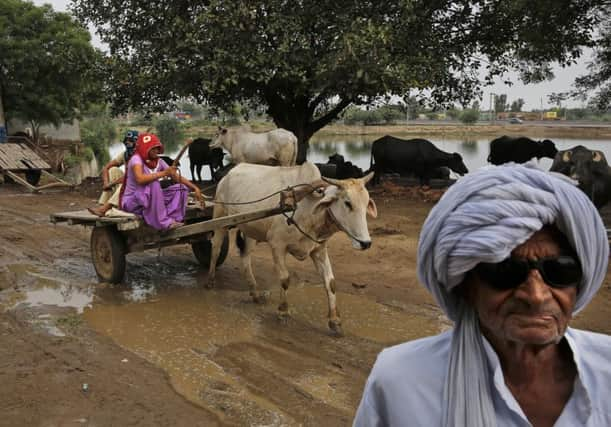Indian man searches 1,700 miles for a bride


But after an extensive search among women of his caste in his area, no suitable bride could be found.
A larger factor had narrowed the field sharply: a skewed male-female ratio that is particularly pronounced in his home state of Haryana, in India’s north, due to sex-selective abortions in a society where many families prize boys over girls, mostly for economic reasons.
Advertisement
Hide AdAdvertisement
Hide AdThrough a friend, Mr Berwal eventually found a woman 1,700 miles to the south, in the state of Kerala, who was willing to marry him. But with a different language and profoundly different customs, she was overwhelmed by her new life.
That dramatic decision more than 10 years ago shocked his village of Sorkhi at the time but has become increasingly common these days in northern India, where the dearth of eligible women is starkest.
In Sorkhi, buffaloes roam the dirt roads, winding their way to a massive pond, the main feature of the sleepy village. Women go by driving slow-moving oxcarts, loaded with grass and other fodder for cattle. It’s as if life has not changed over the decades in Sorkhi’s bucolic routine, although the village of 7,000 is just 95 miles west of New Delhi, India’s capital.
What has changed, however, is the glaring shortage of young women, says Om Prakash, a retired school teacher and influential village elder.
“In Sorkhi alone, there are around 200 to 250 young men who wish to get married, but their weddings are not taking place since they can’t find girls to marry,” said Mr Prakash, as several elderly men sitting on rope-strung cots nearby nodded their heads in agreement.
India banned prenatal sex determination tests in 1994 after it became evident that families were aborting female foetuses. It is also illegal for medical doctors or technicians conducting scans to reveal the sex of a child before birth, but the practice still flourishes underground.
Mobile medical vans made sex-determination tests accessible even in the remotest villages. Female infanticide is also a contributing factor.
In Haryana, the state with the most imbalanced sex ratio, there are 834 girls per 1,000 boys age 6 and under, according to census figures.